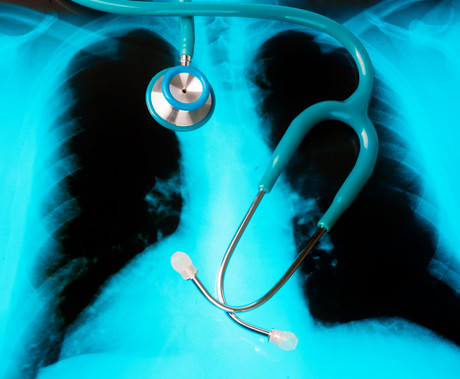Minimally invasive lung cancer screening method

Melbourne researchers have reported a new screening technique for non-small-cell lung cancer (NSCLC), which helps assess whether immune checkpoint inhibitors would be a suitable treatment method for individual patients. Their work has been published in The Journal of Molecular Diagnostics.
Assessing the level of programmed death ligand 1 (PD-L1) expressed by a tumour can help clinicians determine how the patient should be treated. With this in mind, a research team led by RMIT University developed a novel and rapid approach for quantifying PD-L1 expression levels in tumours — one that requires only small amounts of tissue that can be collected using minimally invasive bronchoscopy techniques. The approach can also be used to discriminate malignant from benign tumours and identify mutational status.
Upon collection of a bronchoscopy specimen using brush or biopsy radial probe endobronchial ultrasound (EBUS), a small amount of tissue is placed directly in nucleic acid stabilisation buffer following rapid on-site evaluation of the malignant site. RNA and DNA are isolated from the specimen and an assay is performed to quantify the expression of matrix metalloproteinase-9 (MMP-9) and its endogenous inhibitor (TIMP3).
“In this study we demonstrate for the first time that the ratio of MMP-9:TIMP3 can accurately differentiate malignant from non-malignant tissue specimens without the need to fix tissue for histological assessment,” said RMIT’s Professor Steven Bozinovski. In one case, for example, the MMP9:TIMP3 ratio was elevated more than 300 times while cytology was normal; nine months later, repeat cytology confirmed that the tumour was indeed malignant.
The test itself can be performed very quickly; therefore, diagnosis of malignancy and PD-L1 status can be determined within hours following collection. The test and scoring can also be readily automated to eliminate tester variability.
“The emergence of lung cancer screening trials will result in greater demand to define the molecular nature of suspect lung nodules,” Prof Bozinovski said. “This test has the potential to save considerable time and money in identifying patients who are most likely to benefit from checkpoint inhibitors such as pembrolizumab.”
The assay also quantifies PD-L1 transcript levels, which can have an important impact on the clinical management of NSCLC. Pembrolizumab has FDA approval for the frontline treatment of patients with advanced NSCLC whose tumours have 50% or greater PD-L1 expression as determined using the SP263 immunohistochemistry test. Patients with lower PD-L1 expression levels are more likely to benefit from a combination of pembrolizumab and chemotherapy. This study showed a strong positive association between transcript levels of PD-L1 as measured by the new assay and the FDA-approved SP263 immunohistochemistry.
According to the investigators, enough genomic DNA from the same specimen should be available to allow multipanel targeted next-generation sequencing to assess the total mutational burden of the tumour. This is possible because the tissue is unfixed, maintaining the integrity of DNA and RNA. In the current report, mutations were detected in the majority of EBUS tumour specimens, including TP53 gene mutations found in 10 of 15 NSCLC samples. Such information may further refine patient selection for a particular treatment regimen.
“We believe our test should significantly enhance the diagnostic utility of EBUS-guided bronchoscopy specimens for the molecular testing of lung cancer patients,” Prof Bozinovski said.
Please follow us and share on Twitter and Facebook. You can also subscribe for FREE to our weekly newsletters and bimonthly magazine.
Novel 3D bioprinter can replicate human tissue
Biomedical engineers have invented a 3D printing system capable of fabricating structures that...
Medical gauze can identify shark species following attacks
Injury dressings found in first-aid kits can be used to identify shark species involved in bite...
Liquid biopsy analysis helps improve cancer monitoring
Researchers have developed a liquid biopsy method that sequences and analyses DNA fragments...




